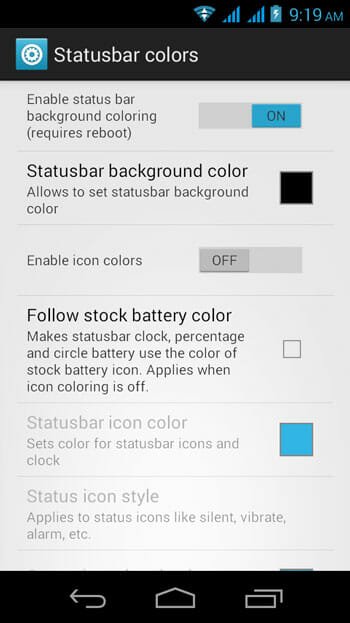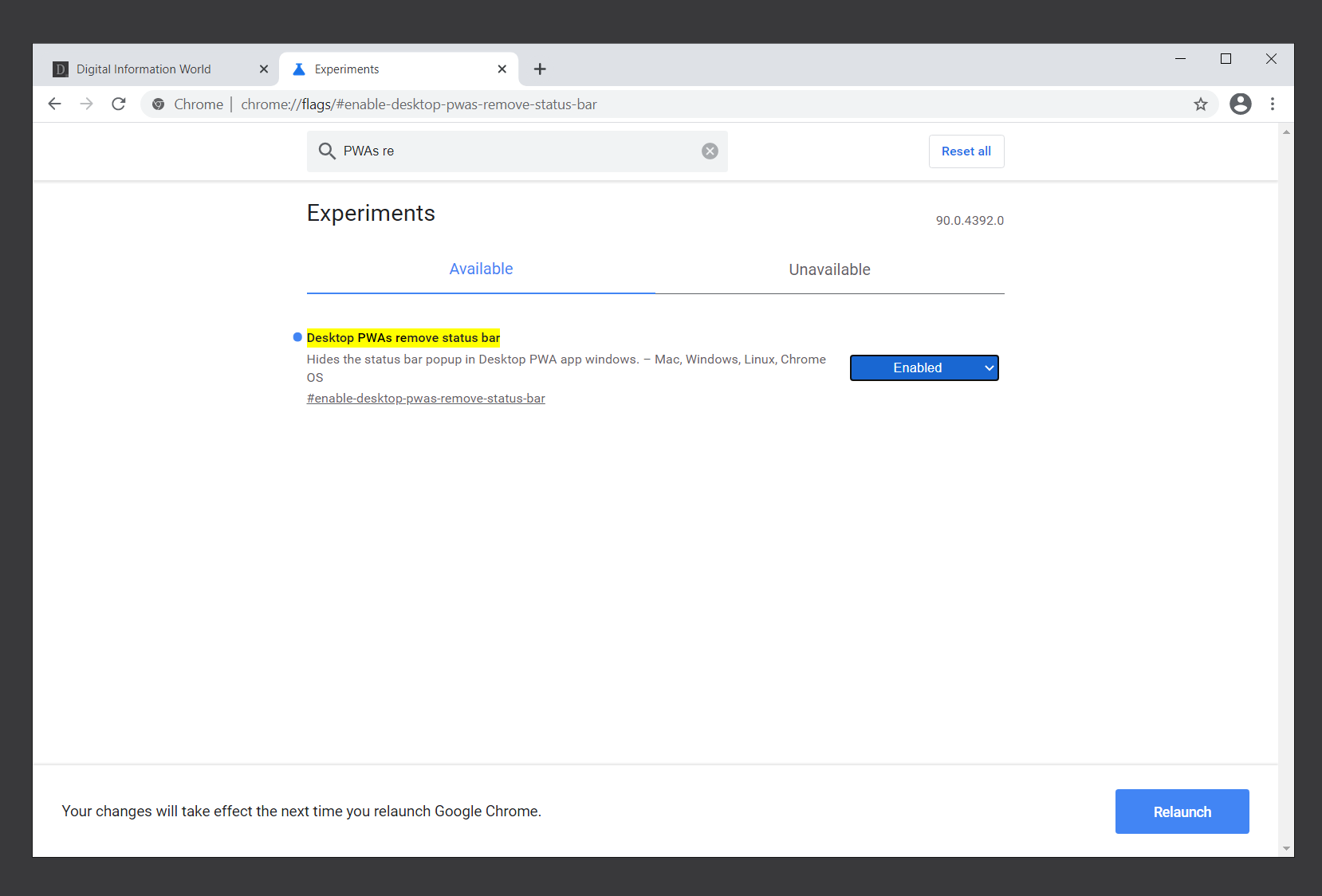

STAUS BAR ON CHROME FOR MAC INSTALL
If you select Themes and then Get More Themes, you’ll find yourself in a library of thousands of themes made by Mozilla and Firefox users-get yourself a colorful background image for the tabs bar, change everything in the browser to various shades of blue, or install whatever else catches your eye in the themes gallery. Doing so changes the color of the toolbar, the toolbar buttons, the browser menus, the “new tab” screen, and various other bits of the browser interface. To really revamp the look of Firefox, click the Themes button at the bottom, which will let you switch between the browser’s built-in light and dark themes. To go back to the way Firefox was when you first installed it, click Restore Defaults. They won’t take up room on the toolbar, but will be accessible in a couple of clicks-another option if you want to keep something close at hand. Firefox also lets you drag icons around on the toolbar to reposition them.ĭrag shortcuts up to the top right to place them in what Firefox calls the Overflow Menu (the two greater-than symbols). Simply drag and drop icons from the main list to the toolbar at the top, or drag them out again to remove them.

Head to the main app menu (the button with three lines in the top right), then choose Customize to change the buttons and shortcuts available in Firefox. Customize Mozilla Firefox Too many shortcuts? Drop ’em in Firefox’s Overflow Menu. You can also right-click on a toolbar icon to choose where it appears (and to completely remove the extension from your browser). If your things start to get too crowded, drag the right-hand edge of the address and search bar further to the right-any shortcuts that get pushed out will be added to the top of the main Chrome menu, so you’ll still be able to get to them. Sometimes, you’ll be able to add an extension to the toolbar by toggling it off and on again on the same screen.Ĭhrome also lets you drag icons around on the toolbar to reposition them. Just choose More Tools and Extensions from the main Chrome menu, then dive into the individual options for each extension. You can select which extensions and add-ons get shortcuts on the toolbar, though. Another appearance customization is directly underneath-a toggle switch that lets you choose whether or not a “home” button appears on the toolbar.īeyond the extensive selection of themes, however, there are only a few other customization options in terms of how Chrome looks. Next to the Themes link on the Settings tab you’ll find a Reset to default button that will revert Chrome to its original look and remove the theme you’ve got installed. You’ll find a host of them-from a simple cool blue look to more elaborate designs based on space imagery-all made by other Chrome users and Google itself. Play around with Chrome’s appearance by opening the browser’s menu (the three vertical dots in the top right) and choosing Settings, then Themes. Customize Google Chrome Even something as simple as a color change can be refreshing.

Whether you want easier access to a much-used browser extension, or you’ve gotten tired of your browser’s default colors, you can tweak the individual interfaces of Google Chrome, Mozilla Firefox, Apple’s Safari, and Microsoft Edge in numerous ways. Each popular browser actually offers fairly extensive customization options you should really be taking advantage of. You probably use your web browser daily for both work and play, but you don’t have to just accept your window onto the web as it was when you first installed it.


 0 kommentar(er)
0 kommentar(er)
